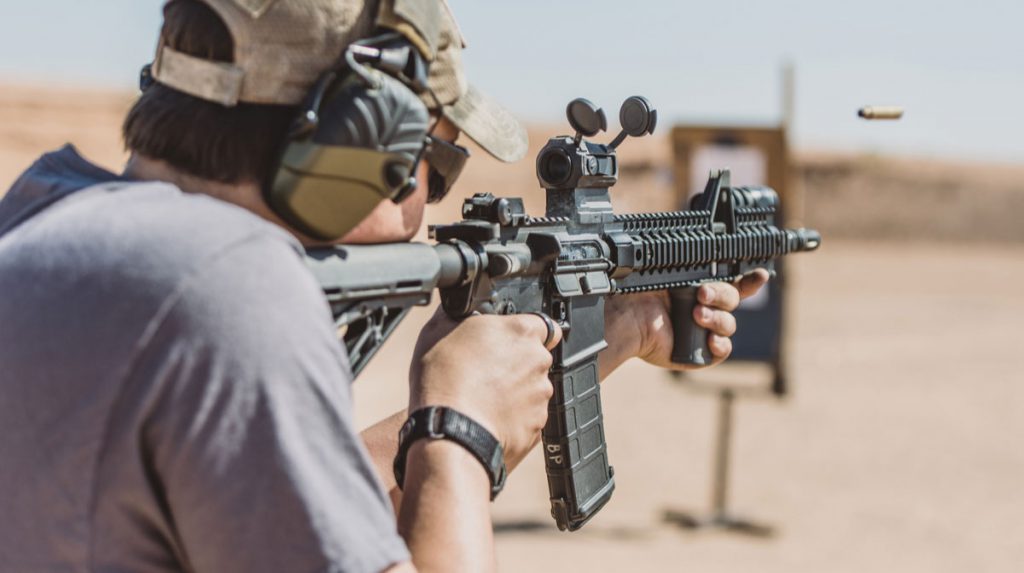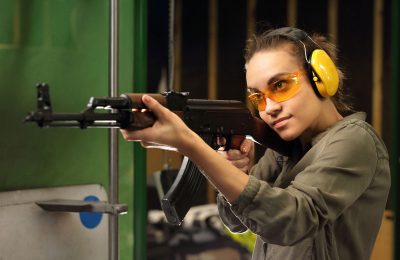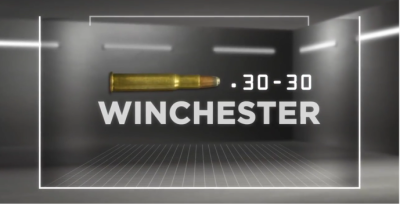In a perfect world we would simply buy whatever our hearts desired. Unfortunately for many of us, the realities of budget restrictions are real. This is especially true in the realm of firearms. Like many people I unintentionally have expensive tastes in guns and nowhere is this more obvious than with rifles. While my checkbook says, “sale section” my eyes longingly gaze at the Holland & Holland “Royal” Deluxe Double Rifle with its $228,000 price tag. The reality however is that even though an AR-15 rifle may be bargain priced, it doesn’t always mean low quality. Let’s take a few minutes and talk about choosing the best rifle for the money.

If we take the time to walk through the specific components of a gun we can easily determine what is necessary and what isn’t. For example a carbon fiber barrel is nice, but unless your budget allows it, there is no real need for it. So, from front to back, let’s look at our AR-15 and figure out what we need to get the best rifle for the money. First stop is the muzzle device. Over the past decade the prevalence of ornate quantum physics influenced muzzle devices have flooded the market. They promise everything from better muzzle control to improved ballistic performance and tastier pizza. In actuality any muzzle device beyond a standard flash hider is an add-on that enhances the performance of a good gun. Staying with our bargain gun concept, I would encourage you to stick with the decades old birdcage style flash hider. From there we need to talk about the barrel. While a cryo-treated carbon fiber depleted uranium barrel would be nice, sticking with a standard stainless steel workhorse will get the job done. Surrounding the barrel, we have the handguards. There is a huge aftermarket business for handguards with as many designs as there are stars in the sky. Sticking with a simple M-LOK free float handguard will serve you well for a very long time and support any gear you want to add to the gun.
Now onto a part that requires some thought. In fact, it is two parts we need to look at. The upper and lower receiver are very important parts of our gun because they are not only key to reliability and function, they also affect accuracy. The question seems to be forged vs billet. Forged parts are essentially the product of metal poured into a mold. They can be very high quality and affordable. Billet are parts cut from blocks of metal with CNC machines. These are much heavier in most cases but allow greater tolerance control. If you are careful when you shop, you can find guns that have the upper and lower fit together. This is the key to good performance and should be considered above the manufacturing process used. Inside the upper we find the bolt carrier group. This is a part which ultimately houses the firing pin along with other related parts. Like so many other parts, there is no shortage of options. While exotic metals and coatings will tempt you, for the sake of the pocketbook I suggest staying with a simple MIL-SPEC bolt carrier group. They are not very sexy, but they have served well in millions of rifles for a very long time. In the lower receiver we find the trigger. Once again, a standard MIL-SPEC trigger will serve you well. In fact, I would venture to say that most novice shooters cannot tell what type of trigger is any one specific gun versus another. The flavor of the day is high-performance drop-in triggers, but they can easily add $200+ to a gun which defeats our purpose.
Rounding out the general influential items on the gun we will look at the stock. I believe that you need to spend at least a little money here and get a five or six position collapsible stock. This will allow the gun to fit you regardless of what you are wearing. From bulky winter jackets to summer t-shirts the gun can be adjusted to fit you well. That is where I would stop however because it is all we really need. You will be tempted with battery compartments and adjustable cheek pieces just to name a few. While they are nice, we once again, don’t really need them.
The last item we need to touch on are optics. Rare is the day that I see a student in class without an optic on their rifle. And for good reason. Optics allow us to improve our accuracy as well as speed when used correctly. I know what you are thinking, ”He is going to tell us no optic and completely ruin our chance of having a cool rifle.” Well it’s your lucky day because I am going to tell you to get an optic. We will be price conscious however and stay with a simple function red dot, but they bring so much to the table it is hard to keep one off the gun. Every rifle I own has an optic on it. While some may argue that iron sights are fine, rifle optics are a technological leap forward that we should take advantage of. Rifles were all musket ball style guns at one point and the self-contained cartridge changed all of that. I feel the same way about optics.
Follow this guide and you will be able to get a rifle that is a good balance between function and cost. One nice thing to remember is that the AR-15 is easily modified. If down the road, you have a cash windfall, you can easily change parts out on the gun as you like. Think it is time for a drop-in trigger? Just crack the gun open and slip in your new trigger of choice with very little effort. Even if you don’t, you will have a solid simple shooter that will serve you well in a variety of applications.






![The Ammo Locker: All About the .300 Weatherby Magnum [Video]](https://qacontent.gunbroker.com/wp-content/uploads/2021/02/AmmoLocker-.300-Weatherby-Magnum-400x204.png)
![Ammo Locker: All About 7mm-08 Remington [Video]](https://qacontent.gunbroker.com/wp-content/uploads/2021/02/AmmoLocker-7mm-08-Remington-400x204.png)

![Ammo Locker: All About .223 Remington [Video]](https://qacontent.gunbroker.com/wp-content/uploads/2021/02/AmmoLocker-.223-Remington-400x204.png)

